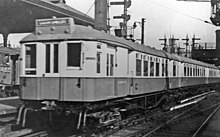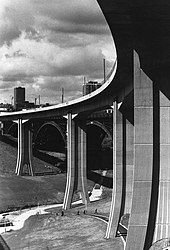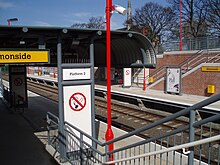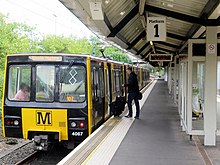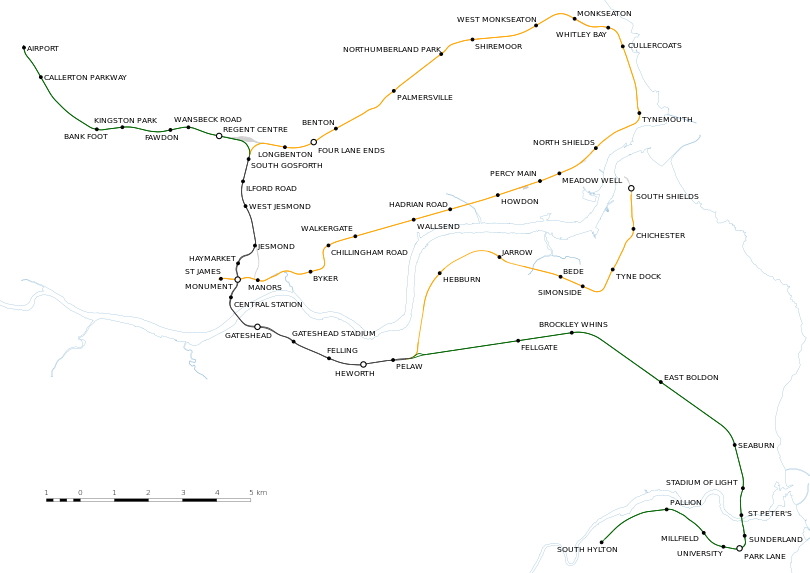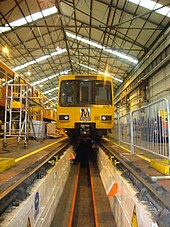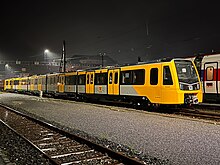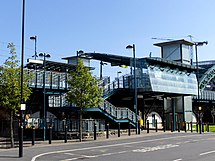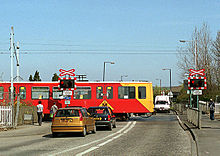
The Durham Coast Line is an approximately 39.5-mile (63.6 km) railway line running between Newcastle and Middlesbrough in North East England. Heavy rail passenger services, predominantly operated Northern Trains, and some freight services operate over the whole length of the line; it provides an important diversionary route at times when the East Coast Main Line is closed. Light rail services of the Tyne and Wear Metro's Green Line also operate over the same tracks between a junction just south of Sunderland station and Pelaw Junction.

South Gosforth is a Tyne and Wear Metro station, and former British Rail station, serving the suburb of Gosforth, Newcastle upon Tyne in Tyne and Wear, England. It originally opened on 27 June 1864, as part of the Blyth and Tyne Railway, and became part of the Tyne and Wear Metro on 11 August 1980.

Heworth Interchange consists of a National Rail, Tyne and Wear Metro and bus station. It is located in the suburb of Heworth, Gateshead in Tyne and Wear, England, and opened on 5 November 1979 for rail and bus services. The station joined the Tyne and Wear Metro network around two years later, on 15 November 1981.
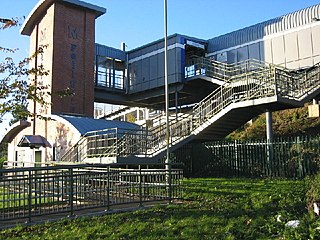
Fellgate is a Tyne and Wear Metro station, serving the suburbs of Fellgate and Hedworth, South Tyneside in Tyne and Wear, England. It joined the network on 31 March 2002, following the opening of the extension from Pelaw to South Hylton.

Brockley Whins is a Tyne and Wear Metro station, serving the suburbs of Boldon Colliery and Brockley Whins, South Tyneside in Tyne and Wear, England. It joined the network on 31 March 2002, following the opening of the extension from Pelaw to South Hylton.

East Boldon is a Tyne and Wear Metro station, serving the villages of Cleadon and East Boldon, South Tyneside in Tyne and Wear, England. It joined the network on 31 March 2002, following the opening of the extension from Pelaw to South Hylton.

Pelaw is a Tyne and Wear Metro station, serving the suburbs of Bill Quay, Pelaw and Wardley, Gateshead in Tyne and Wear, England. It joined the network on 15 September 1985.

West Monkseaton is a Tyne and Wear Metro station, and former British Rail station, serving the suburb of Monkseaton in North Tyneside, Tyne and Wear, England. It was opened in 1933, closed in 1979 for conversion to become part of the Tyne and Wear Metro, and joined that network in 1980.

Jarrow is a Tyne and Wear Metro station, serving the town of Jarrow, South Tyneside in Tyne and Wear, England. It joined the network on 24 March 1984, following the opening of the fifth phase of the network, between Heworth and South Shields.

Jesmond is a Tyne and Wear Metro station, serving the suburb of Jesmond, Newcastle upon Tyne in Tyne and Wear, England. It joined the network on 11 August 1980, following the opening of the first phase of the network, between Haymarket and Tynemouth via Four Lane Ends.

South Shields Interchange is Tyne and Wear Passenger Transport Executive's transport hub in the coastal town of South Shields, South Tyneside in Tyne and Wear, England.

Hebburn is a Tyne and Wear Metro station, serving the town of Hebburn, South Tyneside in Tyne and Wear, England. It joined the network on 24 March 1984, following the opening of the fifth phase of the network, between Heworth and South Shields.

Kingston Park is a Tyne and Wear Metro station, serving the suburb of Kingston Park in the English city of Newcastle upon Tyne. It was opened in 1985, adjacent to the level crossing carrying Brunton Lane across the railway and with staggered platforms on either side of the level crossing.

The Regent Centre Interchange is a multimodal transport hub, serving the suburb of Gosforth in the English city of Newcastle upon Tyne. It includes a station on the Tyne and Wear Metro, a bus station and a multi-storey car park, and is adjacent to the Regent Centre business park. It was opened in 1981.

Central Station is an underground Tyne and Wear Metro station, serving the Grainger Town area of the city of Newcastle upon Tyne in Tyne and Wear, England. It joined the network on 15 November 1981, following the opening of the third phase of the network, between Haymarket and Heworth. The station is named after Newcastle Central railway station, which stands directly above it.
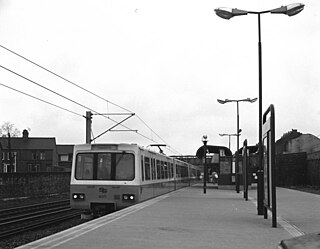
Felling is a Tyne and Wear Metro station, serving the suburb of Felling, Gateshead in Tyne and Wear, England. It joined the network on 15 November 1981, following the opening of the third phase of the network, between Haymarket and Heworth.

Tyne and Wear is a metropolitan area covering the cities of Newcastle upon Tyne and Sunderland, as well as North and South Tyneside, Gateshead and Washington.

The Tyne and Wear Metrocars are a fleet of light rail vehicles manufactured by Metro-Cammell for the Tyne and Wear Metro in North East England between 1978 and 1981. For operation on Network Rail controlled tracks between Pelaw Junction and Sunderland, they are designated on TOPS as the Class 599. Most were refurbished between 2010 and 2015 by Wabtec Rail at Doncaster Works and are scheduled to be replaced by Class 555 rolling stock from 2024.

South Gosforth Traction Maintenance Depot is a vehicle cleaning, maintenance and stabling facility used by the Tyne and Wear Metro, located in Gosforth, Newcastle upon Tyne in Tyne and Wear, England.

The British Rail Class 555 Metro is a class of electric multiple units, commissioned and built for the Tyne and Wear Passenger Transport Executive (Nexus) by the Swiss company Stadler Rail, at a total cost of £362 million, for use on the Tyne and Wear Metro. For operation on Network Rail controlled tracks between Pelaw Junction and Sunderland, they are designated on TOPS as the Class 555.



